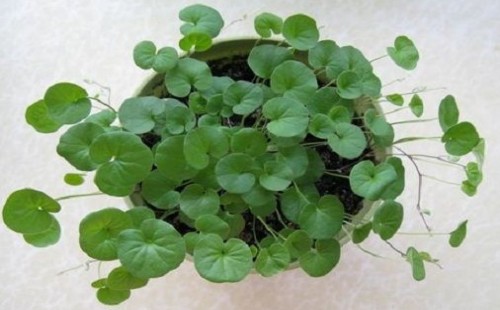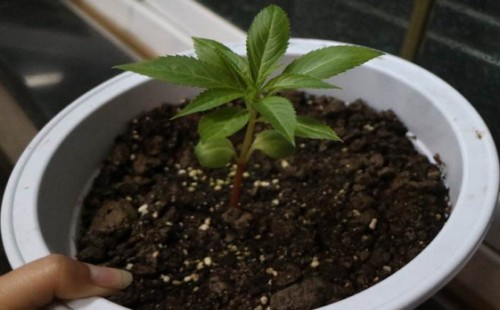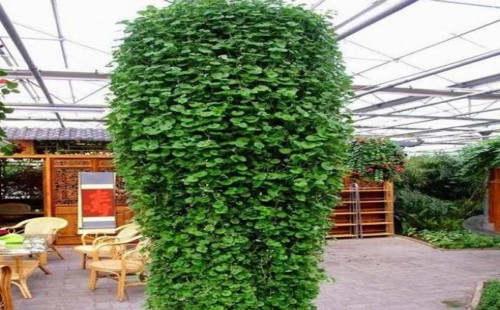How to plant seeds of Dichondra repens
Dichondra repens has the characteristics of strong viability, long life, resistance to shade and dampness, beautiful plant type and so on, so it is a very excellent green plant. It can not only be used for landscaping as a land plant, but also as a potted plant to decorate and beautify the environment. And the reproduction of Dichondra repens is also very simple, and potted seedlings can be obtained by direct sowing. So, how to grow Dichondra seeds?

Dichondra can be sown in spring or autumn. Spring sowing usually takes place from April to May and autumn sowing usually takes place from September to October. Whether it is spring sowing or autumn sowing, it is very suitable for seed germination as long as the temperature in the soil environment is kept at about 21 ℃. And Dichondra can be sown either naked or coated, but the germination rate of the former is higher than that of the latter, after all, the seeds of the latter will more or less affect sprouting after a layer of coating.
However, no matter which sowing method is adopted, in order to improve the budding rate and the uniformity of budding, it is generally necessary to soak the seeds before sowing, so that the seeds will fully absorb water and expand and then sow, the seedling emergence effect will be better. But it is best to soak the seeds in hot water of 60 ℃, which can break the dormancy of the seeds, make them wake up and be full of vitality, so as to achieve the purpose of accelerating germination and improve the germination rate of seeds.
Next, the soaked seeds are sowed or sowed on the nursery bed, and then the original is covered with a layer of culture soil 1-2 cm thick, and finally covered with a non-woven fabric or straw curtain. This can play the role of heat preservation and moisturizing, so that the emergence of seedlings more neatly, thus to a large extent improve the budding rate and emergence rate. In the meantime, we need to do a good job of heat preservation and moisturizing measures in time to ensure that the seeds can sprout smoothly.
After the seeds of Dichondra repens emerge, they can usually be transplanted and planted in pots when a few leaves are unfolded. After 2-3 weeks of transplanting and planting in the pot, we can take the way of extra-root topdressing to supplement nutrients to ensure that the plant can maintain exuberant growth and make the potted Dichondra rapid prototyping. At that time, we can also wait for the opportunity to prune branches and leaves to promote the germination of new branches and leaves, and at the same time make the plant shape of potted plants more beautiful and more suitable for viewing.
During the maintenance and management period, in addition to water and fertilizer, pruning and other work, we also need to do a good job of weeding in the basin in time to avoid weakening plant growth due to weeds competing for nutrients of Dichondra repens. At the same time, we also need to do a good job in the prevention and control of diseases and insect pests. Although the disease resistance of Dichondra is relatively strong, the hot and humid climate from July to August every year is the high incidence period of diseases and insect pests. We can keep spraying the potted plants with carbendazim, chlorothalonil and other germicidal disinfectants once a week. For pest control, corresponding drugs should also be selected for spraying.
Time: 2019-05-23 Click:
- Prev

How to plant impatiens seeds
Impatiens often use the way of sowing to breed potted young plants, so if you want to sow seeds, you need to harvest seeds in advance. When the impatiens fruit is ripe, the fruit clip will bounce open, thus bouncing the seeds around. If you want to harvest fully ripe seeds, you can search at or around the bottom of the flowerpot.
- Next

The planting method of Dichondra repens
Dichondra repens is a kind of herbaceous plant with stolons, and its stems and branches are relatively slender, the leaves are mostly round, and the leaf color is also very green, so it is very suitable for planting as a garden green plant. At the same time, it is used as a hanging pot plant with higher ornamental value. So, how to plant Dichondra repens? Today
Related
- Fuxing push coffee new agricultural production and marketing class: lack of small-scale processing plants
- Jujube rice field leisure farm deep ploughing Yilan for five years to create a space for organic food and play
- Nongyu Farm-A trial of organic papaya for brave women with advanced technology
- Four points for attention in the prevention and control of diseases and insect pests of edible fungi
- How to add nutrient solution to Edible Fungi
- Is there any good way to control edible fungus mites?
- Open Inoculation Technology of Edible Fungi
- Is there any clever way to use fertilizer for edible fungus in winter?
- What agents are used to kill the pathogens of edible fungi in the mushroom shed?
- Rapid drying of Edible Fungi

